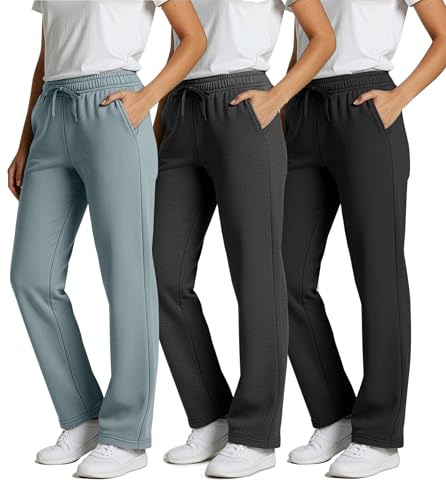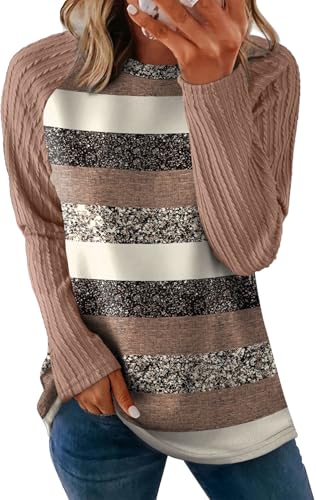Skiing is one of those adventures that’s as thrilling as it is unpredictable. Whether you’re carving through fresh powder or braving icy winds, the right clothing can make or break your day on the slopes. I’ve learned the hard way that staying warm, dry, and comfortable isn’t just about looking the part—it’s about having the right gear.

From base layers that keep you cozy to outerwear designed to handle the elements, every piece serves a purpose. It’s not just about piling on clothes; it’s about choosing smart, functional items that let you focus on the thrill of the ride. Let’s dive into the must-haves every skier needs to stay comfortable and confident out there.
Importance Of Proper Ski Clothing
Proper ski clothing transforms the entire skiing experience. It’s not just about staying warm—it’s about staying dry, mobile, and protected against harsh mountain elements. The right layers let me focus on carving turns, not battling discomfort or cold.
Windproof outerwear is essential. Strong gusts at high altitudes can cut through inadequate jackets. Wearing a waterproof, insulated ski jacket and pants ensures I stay shielded from snow and moisture during the day.
Layering makes all the difference. A moisture-wicking base layer keeps sweat from chilling my skin, while mid-layers, like fleece or down, provide insulation without adding bulk. When my body stays at the right temperature, I ski longer and enjoy it more.
Accessories play a critical role too. Insulated gloves or mittens protect my hands from freezing winds, while a neck gaiter or balaclava prevents exposure to frost. Goggles with anti-fog lenses maintain visibility, which is crucial in varying weather conditions.
Quality ski clothing adds safety and improves performance. Bright colors or reflective details make me more visible on slopes, ensuring other skiers notice me quickly. Breathable designs prevent overheating during intense runs. With proper clothing, I can concentrate fully on the slopes.
Base Layers: The Foundation Of Warmth
A solid base layer is where your ski outfit starts. It keeps you warm, dry, and ready to enjoy the slopes for hours without discomfort.
Material Matters: Wool Vs. Synthetic
I’ve tried plenty of base layers, and two materials stand out—wool and synthetic. Merino wool excels in regulating body temperature and fighting odors, even during intense runs. Its natural insulation keeps me warm even if it gets damp. On the other hand, synthetic fabrics like polyester are great for high-output days. They dry quickly, wick away moisture effectively, and are budget-friendly. For very cold conditions, I prefer lightweight merino wool. On warmer spring skiing days, synthetic options work better.
Choosing The Right Fit
Base layers only perform if they fit well. I aim for a snug but flexible fit, which ensures moisture is wicked away while still providing full mobility. Baggy layers bunch up under outerwear, creating discomfort and cold spots. For skiing, I choose long sleeves and leggings that stay in place under mid-layers and ski pants. Compression options are great for maximizing muscle support and reducing fatigue, especially on full-day adventures.
Insulating Layers: Staying Warm On The Slopes
Keeping warm on the slopes is all about layering right. Insulating layers trap heat while staying breathable, allowing you to enjoy skiing even in freezing conditions.
Fleece Jackets And Vests
I always rely on fleece jackets and vests for a lightweight and versatile insulating layer. Fleece is soft, quick-drying, and provides excellent warmth without adding bulk. A full-zip fleece jacket makes adjusting ventilation easy, which is helpful when temperatures fluctuate throughout the day. On milder days, I often wear a fleece vest for core warmth while allowing my arms full mobility. Whether layered under a shell or worn during après-ski, fleece performs exceptionally well.
Down Vs. Synthetic Insulation
Choosing between down and synthetic insulation depends on the conditions. Down offers unmatched warmth-to-weight ratio, making it my go-to for cold, dry ski days. It packs down small, which is perfect for travel, but loses effectiveness when wet. Synthetic insulation, on the other hand, retains warmth even if damp, which is ideal for wetter climates or spring skiing. I keep both in my gear arsenal to match the day’s weather; versatility is key on the slopes.
Outer Layers: Protection Against The Elements
Outer layers are the first line of defense against harsh mountain conditions. I never hit the slopes without reliable outerwear designed to shield me from wind, snow, and fluctuating temperatures.
Waterproof And Breathable Jackets
A waterproof and breathable jacket is a game-changer on the slopes. I count on it to keep me dry and comfortable during long days in unpredictable weather. Jackets with Gore-Tex or similar membranes are my go-to because they block moisture while allowing sweat to escape. Features like sealed seams, adjustable hoods, and powder skirts add another layer of protection, ensuring snow stays out even in deep powder. I also prefer bright-colored or reflective designs because they enhance visibility in dense fog or low light.
Durable Ski Pants
Ski pants must stand up to long sessions of carving and occasional tumbles—my choice is always a pair with reinforced cuffs and waterproof materials. Insulated options are perfect for frigid temperatures, while shell pants give me the flexibility to layer underneath for varying conditions. Ventilation zippers are a lifesaver when I’m working hard on warmer days. I choose pants with articulated knees for added mobility, making them ideal for both aggressive runs and casual descents.
Essential Accessories For Skiing Comfort
Comfort and warmth are key when spending hours in frigid mountain conditions. In my experience, having the right accessories makes all the difference in enjoying a full day on the slopes.
Gloves And Mittens
Keeping hands warm and dry is non-negotiable for skiing. I always opt for insulated gloves with waterproof membranes like Gore-Tex to block snow and moisture. For colder days, mittens are my go-to because their design traps more heat by keeping fingers together. Pairing them with thin, moisture-wicking liner gloves ensures extra warmth and flexibility when temperatures drop. Look for gloves with reinforced palms, adjustable cuffs, and wrist leashes for durability and practicality.
Hats And Balaclavas
Protecting your head and neck from windchill is critical. I usually wear a thin, moisture-wicking beanie under my helmet to add warmth without compromising the fit. On particularly cold or windy days, I grab my balaclava, which provides full-face coverage and fits comfortably beneath a helmet. Balaclavas made of breathable, quick-drying materials like merino wool or polyester blends are ideal for keeping frostbite at bay while preventing overheating.
Socks And Boot Liners
Proper ski socks are a game-changer for comfort and avoiding blisters. I stick to over-the-calf options with a snug fit, made from merino wool or specialized synthetic blends for warmth and moisture management. Avoid thick socks, as they can reduce circulation and create pressure points in ski boots. Boot liners are equally important; investing in heat-moldable liners has significantly improved the fit and warmth of my boots, allowing me to stay on the slopes longer without discomfort.
Additional Clothing Tips For Skiers
Staying warm and comfortable on the slopes takes more than just piling on clothes. I’ve learned that strategy and the right gear make all the difference in extreme conditions.
Dressing In Layers
Layering keeps me prepared for any weather the mountain throws at me. I always start with a moisture-wicking base layer to pull sweat away from my skin; for me, merino wool works best because it stays odor-free after long runs. My mid-layer traps heat—options like fleece or lightweight down let me customize warmth depending on the temperature. For my outer layer, I never compromise on a waterproof, breathable shell to shield me from wind and snow. Adjusting these layers during the day ensures comfort whether it’s sunny or freezing.
Importance Of Quality Over Quantity
I focus on durable, high-performance gear over having excess. Investing in a well-made Gore-Tex jacket or insulated gloves has saved me countless cold, wet days on the mountain. Cheap gear might seem like a way to save, but it often lacks functionality and wears out quickly. I’d rather have a few dependable pieces that I know will keep me dry and warm no matter how long I’m out there. Top-quality items also fit better, which makes all the difference when every move counts.
Conclusion
Skiing is so much more enjoyable when you’re dressed for the adventure. The right clothing and gear don’t just keep you warm and dry—they let you focus on the excitement of carving through fresh snow. Investing in quality pieces that fit well and perform under tough conditions is always worth it.
Every layer and accessory plays a role in your comfort and safety on the slopes. When you’re prepared with the right essentials, you’ll feel confident, stay comfortable, and truly make the most of your time in the mountains. So gear up and enjoy every moment out there!
















